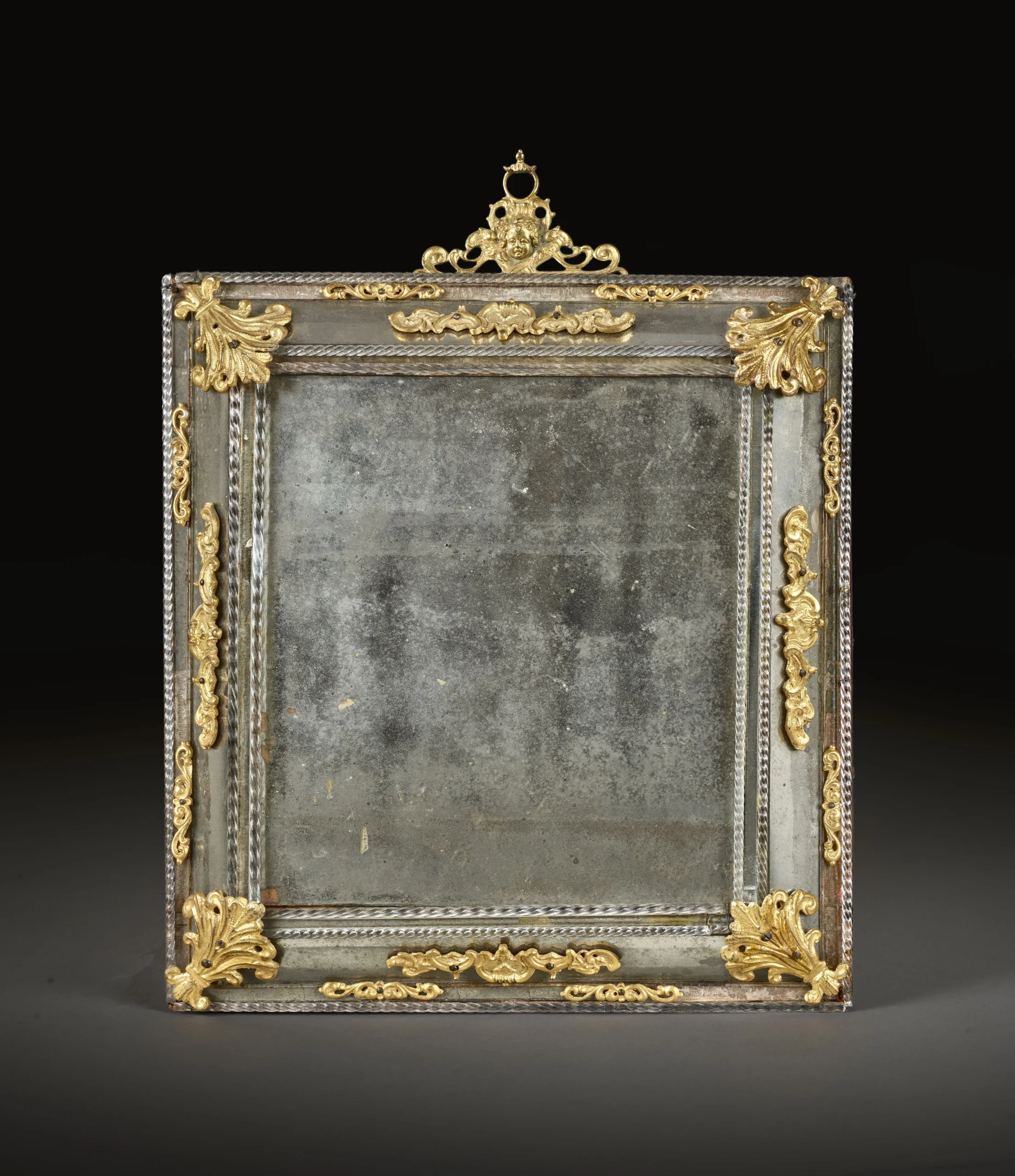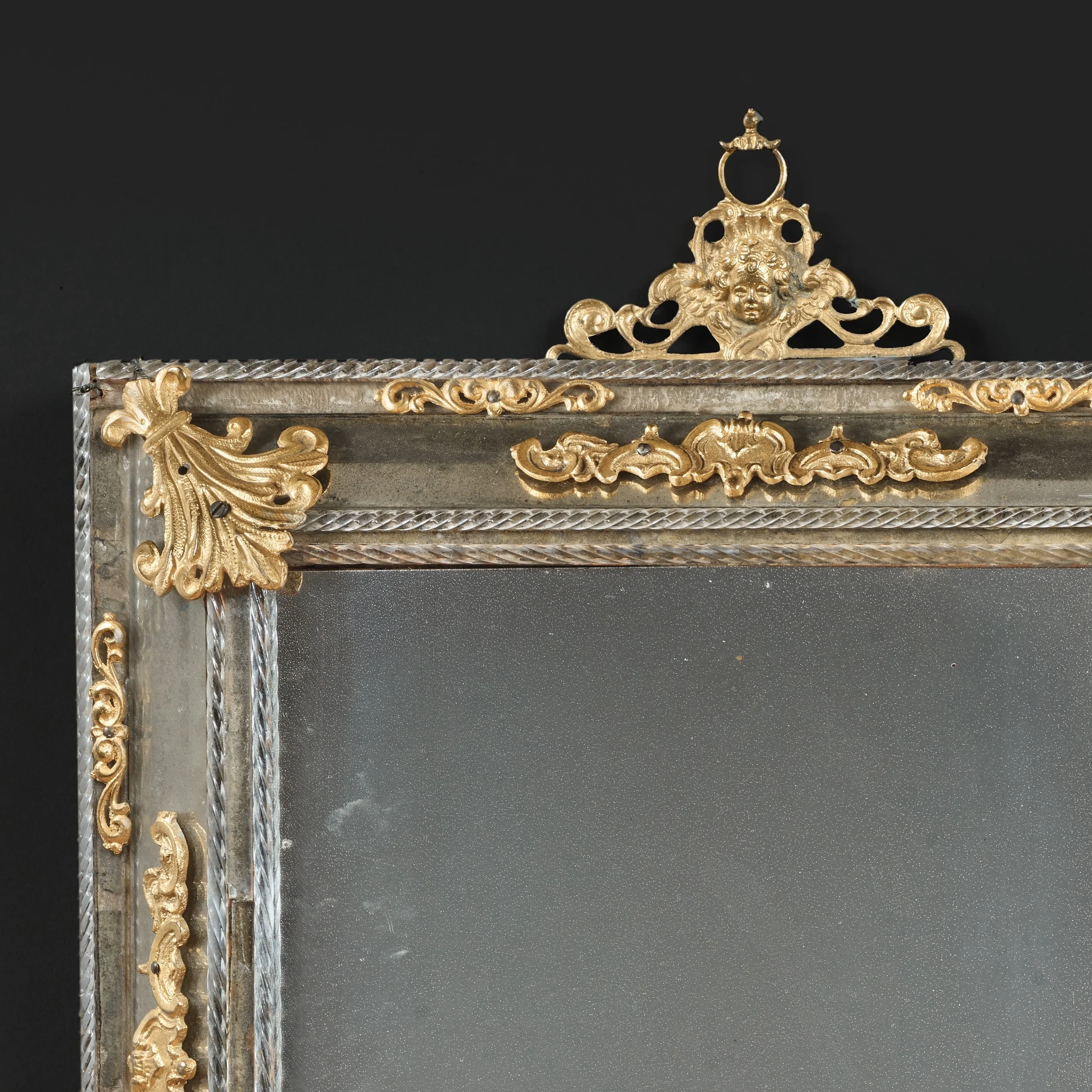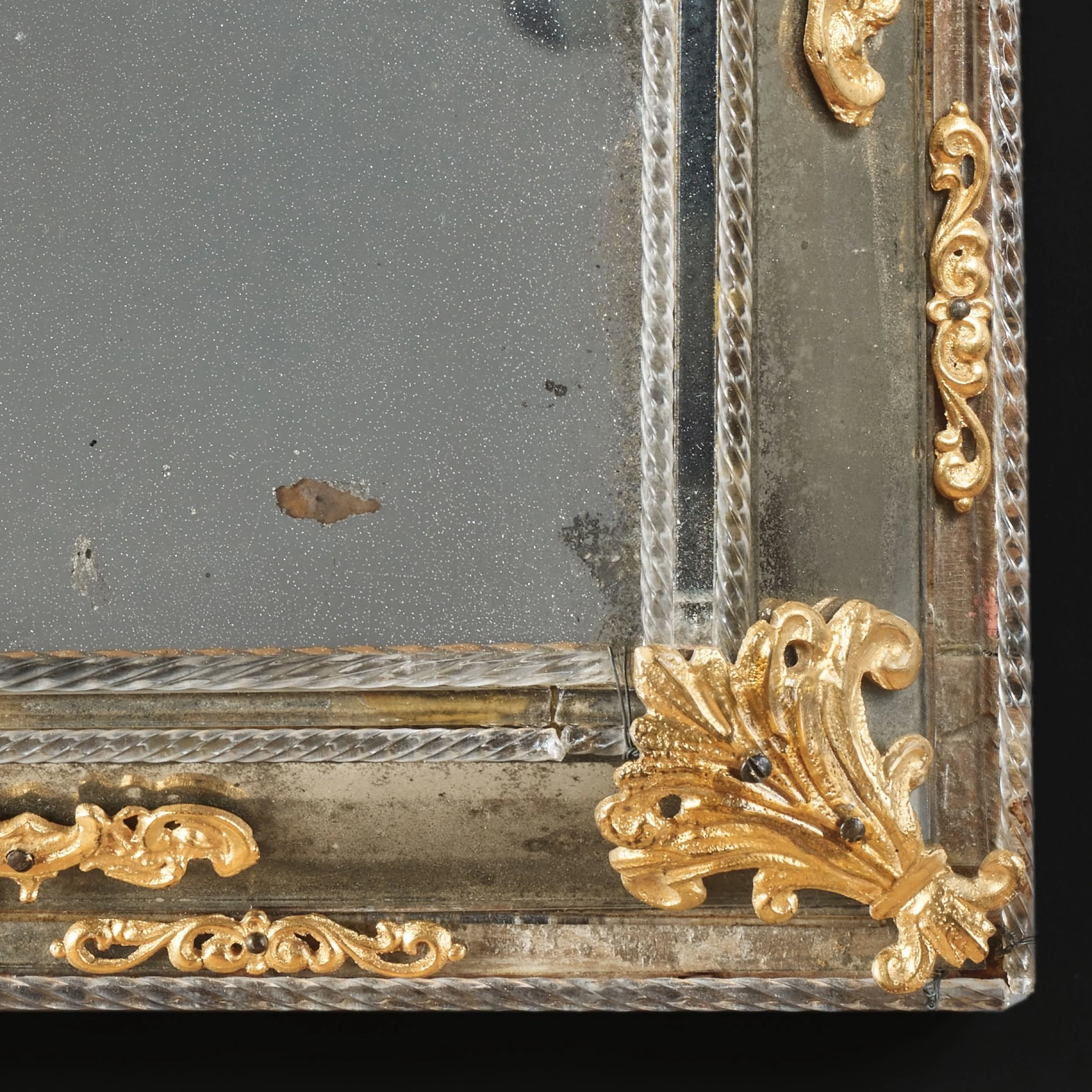Venitian mirror
- Description
- Histoire
Northern Italy, probably Venice, circa 1700
Wood covered with silver leaves
Glass and gilt bronze
Height: 42 cm – 16 ½ inches
Length: 32,5 cm – 12 ¾ inches
Comparable examples:
- Venetian mirror, circa 1790, private collection
- Venetian mirror, early 18th century, private collection
This rectangular mirror features twisted glass rods all around the edge, followed by a thin torus band. The latter is adorned on each side of the frame with two sections of gilt bronze scrolls, and frames a wide band, itself adorned with thick gilt bronze scrolls on each side, joined by a shell. A succession of two fine twisted glass rods precedes the mirror. Each corner is adorned with a broad gilt bronze palmette. The top of the mirror features a pyramid-shaped gilt bronze scroll attachment. A mascaron of a child's head is in the center.
Mirrors in the 17th century
At the end of the 15th century, the technique of making mirrors known as "au mercure" appeared in Italy on the island of Murano. It was the only method able to produce high-quality mirrors of substantial size. A mixture of tin and mercury was applied hot onto a glass plate. This process was highly toxic and cost the lives of many workers. It was replaced in 1837 by the silverware technique and was eventually banned in 1850. The Republic of Venice jealously guarded its monopoly on these luxury objects, making their importation extremely expensive (30,000 old pounds per year). Wishing to make France self-sufficient in the arts and manufacturing, Jean-Baptiste Colbert, Minister of Finance under Louis xiv, sent spies to Murano and brought Venetian craftsmen to the Faubourg Saint-Antoine between 1665 and 1667 at great expense. These workers risked the death penalty from the Venetian Republique if they revealed the secret of mirror-making. It was during this time that the Manufacture Royale de glaces de miroirs was created. It was relocated near Cherbourgin 1668, obtaining the exclusive privilege of manufacturing "glasses of mirrors”. Using the technique of "verre blanc soufflé en manchon [blown white glass]”, the Manufacture Royale was then able to compete with Venetian productions.
To get a flat glass, craftsmen first blew the glass into a hollow bottle shape, called a "sleeve". The ends were cut off, then the cylinder was sliced lengthwise and unfolded to create a flat sheet of glass. With 357 exceptionally large mirrors made for the Galerie des Glaces, completed in 1684, Luxury à la française was firmly established. In 1695, the factory merged with another one located on the site of the former Château des Sires de Coucy, in Saint-Gobain, in the Aisne region. By the end of Louis xiv’s reign, the mirror industry, led by the Manufacture royale de glaces de miroirs, exported mirrors across Europe, generating incomes equivalent to 300,000 to 400,000 livres old pounds per year. Thus, the Venetian monopoly was replaced by the French monopoly. The Manufacture royale de glaces de miroirs lost its privileges during the Revolution. It later transformed into what is now Saint-Gobain.
The ornamentation on this mirror is typical of Venetian mirrors, notably the twisted glass rods. At the very beginning of the 18th century, glassworking was still mainly mastered by Italian craftsmen, particularly Venetians, to whom this mirror is attributed.
Bibliography :
- Georges Vigarello, Le propre et le sale : l’hygiène du corps depuis le Moyen Âge, Paris, Seuil, 1985.
- Graham Child, Les miroirs, 1650–1900, Paris, Flammarion, 1990.
- Nicolas Courtin, L’art d’habiter à Paris au xviie siècle, Paris, Éditions Faton, 2011.
- Nadeije Laneyre-Dagen, Georges Vigarello, La toilette, La naissance de l’intime, catalogue d’exposition Musée Marmottan, 2015.


